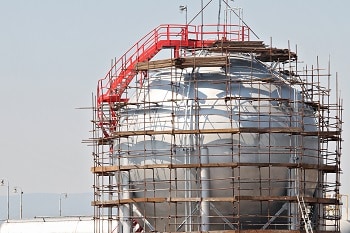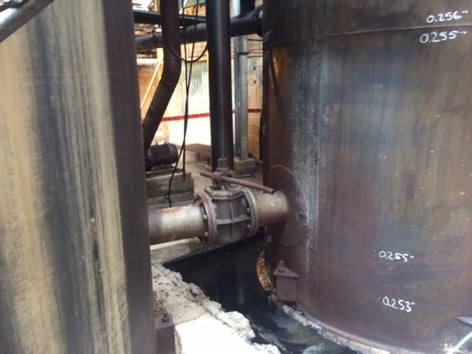An In-depth Introduction of Tank Welding Inspection Requirements and Methodologies for Improved Weld High Quality and Performance
The importance of welding examination standards in the manufacturing of storage tanks can not be overemphasized, as they offer as the backbone for guaranteeing weld stability and functional integrity. Various evaluation methods, consisting of aesthetic analyses and advanced non-destructive testing methods, are vital in recognizing possible flaws that could compromise performance.
Importance of Welding Inspection Standards

Welding evaluation standards incorporate a variety of criteria, consisting of product specifications, welding treatments, and certifications of workers involved in the welding procedure. By imposing these standards, companies can systematically recognize and correct potential issues, thus reducing the chance of expensive fixings or disastrous failures. Extensive inspection techniques foster a society of accountability and precision, encouraging welders to preserve high levels of workmanship.

Typical Welding Evaluation Strategies


Ultrasonic Checking (UT) is another common strategy, using high-frequency audio waves to discover inner defects that might not be visible on the surface. This approach is specifically efficient for identifying gaps or incorporations within the weld steel. Magnetic Fragment Examining (MT) is additionally extensively made use of, specifically for ferromagnetic products, as it exposes surface area and near-surface defects with the application of magnetic areas and ferrous particles.
Furthermore, Fluid Penetrant Screening (PT) spots surface-breaking flaws by using a penetrant to the weld and afterwards utilizing a developer to extract the penetrant. Each of these strategies adds to an extensive assessment method, making sure that welds satisfy the stringent top quality criteria required in storage tank construction.
Regulative Standards and Conformity
Regulatory criteria and compliance are crucial components in making sure the security and reliability of bonded structures in storage tank building - Tank Welding Inspection. These requirements offer to develop minimum demands for material pop over here residential or commercial properties, welding procedures, and assessment practices, therefore minimizing the risk of architectural failures and boosting general efficiency
Secret organizations, such as the American Culture of Mechanical Engineers (ASME) and the American Welding Culture (AWS), provide standards that are extensively embraced in the sector. Compliance with these criteria not only makes certain adherence to best methods yet likewise fulfills lawful and legal responsibilities, guarding the rate of interests of stakeholders.
Governing bodies typically mandate adherence to details codes, such as ASME Code Section IX for welding qualifications and API 650 for bonded tanks. These codes detail needs for welding techniques, credentials of personnel, and testing methods to confirm weld stability.
Regular audits and assessments are vital to maintaining compliance, as they aid recognize discrepancies from established criteria. Non-compliance can result in substantial charges, project delays, and security threats. Hence, a robust understanding of regulatory criteria and a commitment to conformity are critical in achieving top notch and resilient bonded tank frameworks.
Non-Destructive Testing Approaches
How can the integrity of welded frameworks be assured without creating damage? Non-destructive screening (NDT) approaches use a robust service, making it possible for inspectors to review weld quality without jeopardizing the product - Tank Welding Inspection. Among the most usual NDT strategies are ultrasonic testing (UT), radiographic testing (RT), magnetic bit screening (MT), and color penetrant testing (PT)
Radiographic testing includes passing X-rays or gamma rays through the weld, developing images that disclose structural issues such as fractures or gaps. This technique is invaluable for examining the integrity of complicated welds.
Magnetic particle screening is matched for ferromagnetic materials, where electromagnetic fields reveal surface area and near-surface suspensions. Color penetrant testing uses a fluid dye to highlight surface-breaking imperfections, making it an effective technique for non-porous products.
Each of these NDT techniques has distinctive advantages, enabling thorough assessments customized to details materials and welding procedures. By applying these techniques, markets can make like this certain the reliability and security of bonded structures, ultimately improving total performance.
Enhancing Weld High Quality With Examination
Effective evaluation plays a vital duty in enhancing weld quality, working as a crucial checkpoint in the manufacture procedure. By identifying potential problems early, assessments minimize the threat of endangered structural integrity and ensure compliance with industry requirements. Utilizing a combination of visual assessments, non-destructive screening (NDT) this link techniques, and mechanical evaluations, examiners can find concerns such as porosity, splits, and insufficient blend.
Carrying out a robust inspection method not only boosts the overall top quality of welds but additionally fosters a society of liability amongst welders and producers. Routine training and accreditation of evaluation personnel ensure that they are equipped with the necessary abilities to acknowledge and attend to prospective problems effectively. This aggressive technique reduces rework and linked prices, inevitably adding to forecast efficiency.
Moreover, extensive documentation of examination searchings for offers valuable understandings into recurring concerns, assisting in continuous renovation in welding methods. By leveraging sophisticated innovations, such as automated ultrasonic screening or electronic radiography, weld top quality can be enhanced through much more exact analyses. Finally, a rigorous evaluation process is vital in achieving high-grade welds, making sure safety, dependability, and longevity in storage tank fabrication.
Final Thought
To conclude, the application of rigorous storage tank welding inspection requirements and techniques is vital for making certain weld stability and efficiency. By utilizing a combination of aesthetic inspections, non-destructive screening approaches, and adherence to regulatory requirements, companies can effectively determine and minimize potential flaws. Cultivating a culture of responsibility amongst welders better enhances the top quality of welding procedures. Inevitably, these methods add to minimized structural failings, reduced repair service prices, and boosted functional effectiveness within the sector.